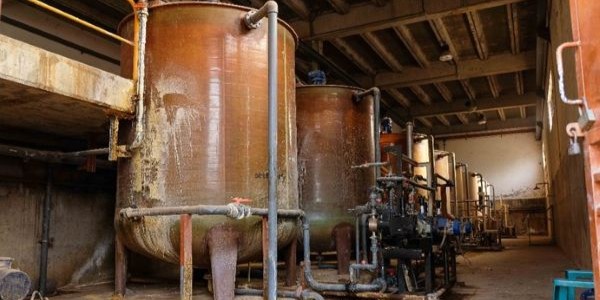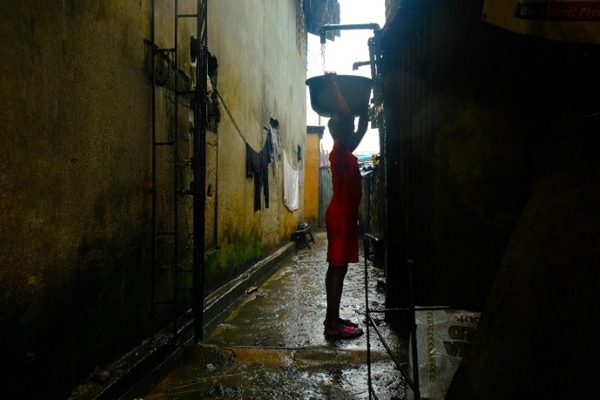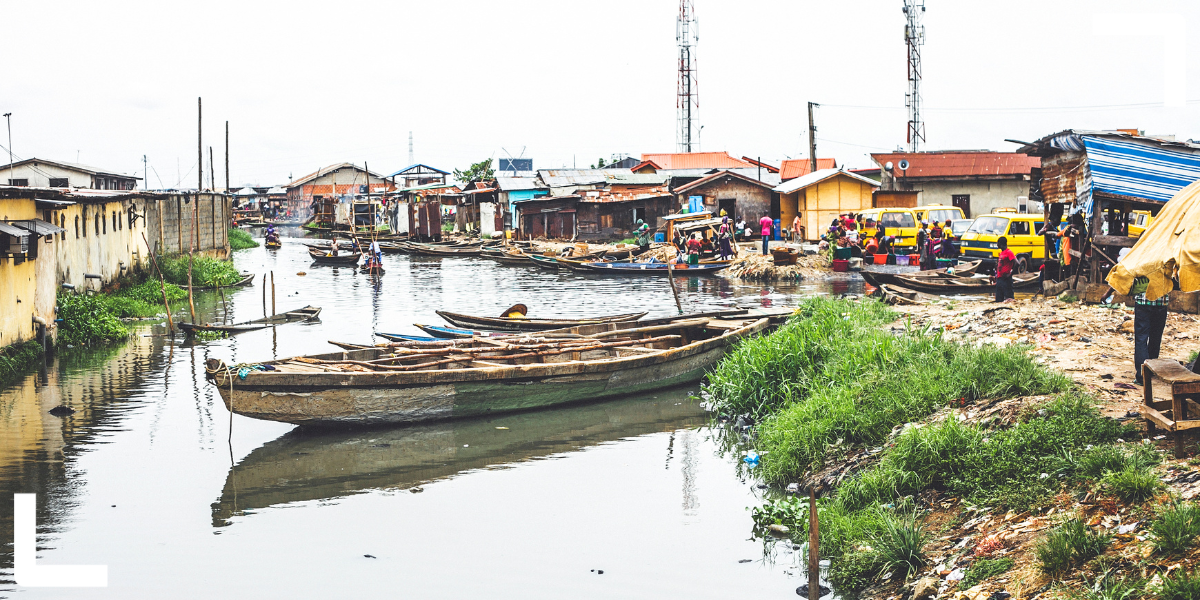By Temilade Sesan and Deji Akinpelu
Potable water is a luxury good in Lagos – a city with so many ambient water sources that planning around them has yielded a rather quirky layout, which fuses a breakaway “island” axis with a much larger “mainland” axis. (Famously, the city’s economy received a massive boost after the Carter Bridge, the first of three bridges now connecting the two axes, was built in the early 1900s.)
The enduring, seemingly intractable challenge for the city is how to convert this abundant natural resource into safe drinking water – a central pillar of public health – for residents.
The existing water supply infrastructure in the city comprises a selection of micro, mini and main waterworks. However, this system – instituted in the colonial era – has been left to atrophy in the decades since, with the result that 90% of the city’s residents are not connected to any public waterworks in 2025.
In this near-absence of state provision, residents are generally left to supply their own water, typically through private and communal boreholes. The cost of installing boreholes is especially prohibitive for low-income households and communities, more so in the current context of runaway inflation and increased economic hardship in the country. And given that water from these pop-up sources has been shown to be widely contaminated, they are hardly the ideal solution to what amounts to a long-term public health crisis.
Privatisation push
Precisely as a result of the state’s failure to deliver potable water at scale, public–private partnerships (PPPs) have long been floated as a solution to the crisis, on the grounds that private entities possess the technical and financial heft required to realise the government’s ambitions in the sector.

Decaying public water infrastructure forces the majority of Lagos residents to source water privately. Photo credit: Deji Akinpelu / AFD
Financing is indeed a major requirement: by one estimate, the number of waterworks built in Lagos needs to triple yearly to keep up with demand. This is a major undertaking for a state that has many pressing developmental needs and limited resources to address those needs. Nonetheless, the government’s seemingly knee-jerk reach for PPP arrangements has faced heavy backlash, most notably from the “Our Water, Our Right” campaign launched by civil society actors over a decade ago.
This history of public protest notwithstanding, the state government – led by the Ministry of Environment and Water Resources (MoE&WR) and Lagos Water Corporation (LWC) – has recently made concrete moves to onboard private contractors on waterworks refurbishment and expansion projects. These strides have been made with the backing of UK non-profit, WaterAid, and Resilient Water Accelerator, a private investment offshoot of the charity.
In the pipeline are large-scale initiatives, such as the proposed 11-million-gallon/day Adiyan II waterworks project and smaller-scale projects, such as the 10,000-gallon/day Akilo micro waterworks. The overarching strategy, according to MoE&WR, is to revive and run existing micro and mini waterworks pending when the overhaul of main waterworks sites is completed – a sort of “low-hanging-fruit” approach to tackling the problem in the near term.
Little is known about the details of the PPP strategy beyond this; the question of how much public subsidy might be available to cushion the effects of potential price increases on low-income households, for example, remains unanswered.
Scale versus substance
It is important to pay attention to the technical and financial aspects of public water delivery, as the state government is doing. The government sees its role in the current PPP regime as that of effective regulation, and cites broad acceptance of its approach among institutional stakeholders.
However, the social and political questions continue to rankle for citizens. What delivery models are appropriate if water is taken to be a right for all the city’s residents, regardless of income status or location? What is the proper role of the state in ensuring the realisation of this right, whether independently of non-state actors or in collaboration with them? What would incentivise state and business actors to value the public health benefits of widespread access to clean drinking water enough to prioritise them above profit?
As it is, the state is having to push back against claims of non-transparency and abdication of responsibility levelled against it by civil society groups. It is a knotty situation, given the scale of the problem and the level of financing required to tackle it at the city scale. The argument for PPPs as an enabler of development on a large scale can seem attractive; after all, a preponderance of projects that fail to scale has been the Achilles’ heel of government and donor-led infrastructure projects alike for a long time.
What citizens would like to know, however, is why the government does not consider a basic good like water (along with health, education and even housing) eligible for substantive public funding. This challenge is grounded in the awareness that, under the influence of neoliberal development institutions, market orthodoxy has come to dominate government policy and strategy – a bit of a mismatch in a country with such high poverty and informality indices as Nigeria.
An alternative approach
In the face of these social and political headwinds, what options do we have for making quality water available and accessible to residents, wherever they live in the city?

A young girl fetches water from a communal tap in Makoko, Lagos. The burden of sourcing water in informal settlements falls disproportionately on women and girls. Photo credit: Deji Akinpelu / AFD
Community-driven infrastructure and service delivery models, such as the ones we are testing within ACRC, present an alternative. These models attempt to harness existing social and economic capital at the community level to catalyse more effective and sustainable water solutions. Low-income households already expend significant resources on water from private sources; floating community-level infrastructure offers a way to pool those resources together and redistribute them more efficiently, potentially lowering unit prices and improving water quality.
Community-driven solutions may be inevitable under the circumstances, given that, even with the most concerted PPP efforts, it will likely be a very long time before water from micro waterworks can reach the lowest-income neighbourhoods. Yet right-to-water advocates are concerned – and understandably so – that this could again amount to a systematic shifting of state responsibility to citizens, without a critical accounting of the implications of such a shift for the broader social contract and the ideals of democratic governance.
It is up to the government to demonstrate an awareness of the contradictions and complexities of the situation, as well as the political will to surmount them in ways that carry along even the most disadvantaged groups. This would involve, for instance, measuring progress in public water supply by the number of households served across income groups, rather than by the number of memorandums of understanding signed with private companies, or even the number of waterworks constructed.
It would also involve vastly expanding the government’s stake – financial and otherwise – in community-scale water projects, including through delegating ownership and responsibility to the environment departments of local government councils. In general, the poorer the area, the higher the level of public investment that will be required for inclusive service delivery.
Redefining progress
Our goal as ACRC is to demonstrate that progress is possible when the components of our theory of change converge: a commitment by the political and business elite involved to leave no one behind; enhanced technical and financial capacity of state agencies, especially MoE&WR and LWC, to deploy the required investment; advocacy and action by citizens mobilising for change in underserved and unserved communities; and continuous political engagement by coalitions of community, civil society and local government actors united in a common vision of reform.
What matters in the final analysis is that all residents are able to access quality water where and when they need it, at prices they can afford. After all, it does not matter how many fancy bridges a city like Lagos builds over its waterways, if residents are unable to drink the water flowing from their taps without fear of disease.
In the meantime, the state government is convinced that its PPP model will deliver the transformative results the city requires. Citizens will be watching.
Header photo credit: peeterv / Getty Images (via Canva Pro). View of Makoko, a lagoon-side informal settlement in Lagos.
Note: This article presents the views of the authors featured and does not necessarily represent the views of the African Cities Research Consortium as a whole.
The African Cities blog is licensed under Creative Commons Attribution-NonCommercial-NoDerivatives 4.0 International (CC BY-NC-ND 4.0), which means you are welcome to repost this content as long as you provide full credit and a link to this original post.



